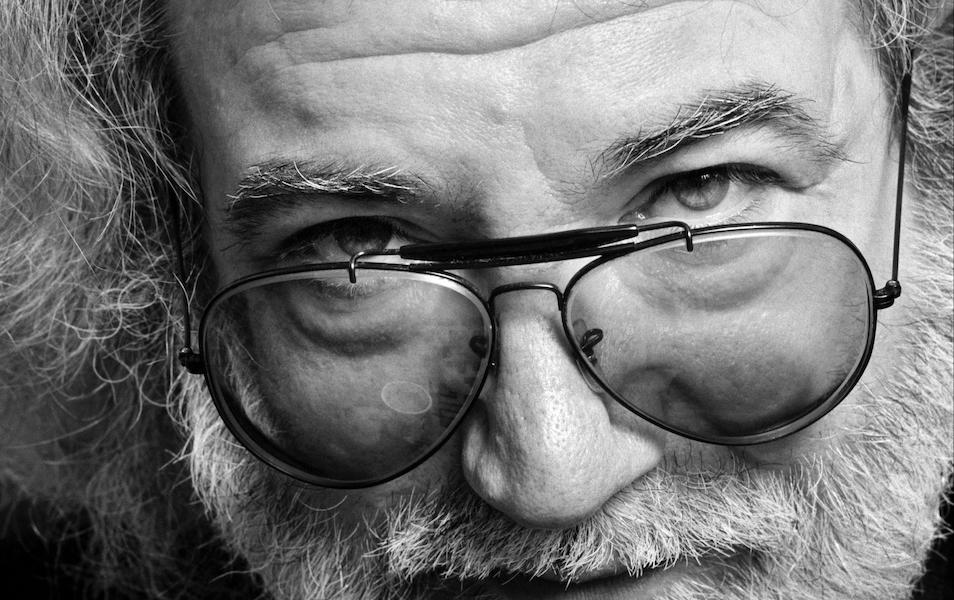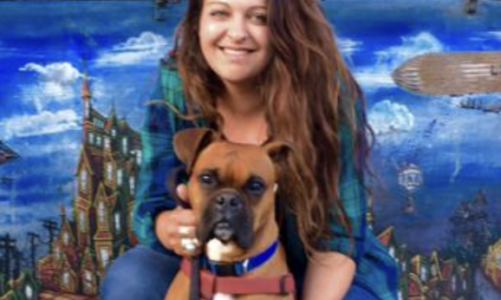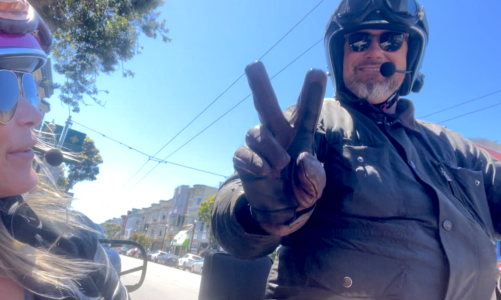Rock photographer Jay Blakeberg gives us a glimpse into the Haight Street Art Center’s “Between the Dark & Light”, which runs July 11 through September 8.
HSV: Having the show in the Haight like this, what does this particular show mean to you?
JB: I grew up in suburban New Jersey in the 1970s, and SF was this fantasy land. We read about it in the Electric Kool-Aid Acid Test, Jack and Neal were coming to SF, we read about it in Relix and Rolling Stone. SF was this mythological place. When we were 15 we were thinking, how do we get to where the Grateful Dead and Jefferson Airplane and the Haight Ashbury and Bill Graham and all of this stuff. So for me to go from being that kid 45 years ago to curating this exhibit for the Haight Street Art Center is a phenomenal achievement and something I’m very proud of. Also very proud to be affiliated with the HSAC. I brought up the idea to Kelly Harris, executive director of the HSAC, I said, “In July, the Dead are playing their final three shows ever …” Actually, that’s not true. They’re going to do three nights in SF as what they’re billing as the final tour. I just wanted to clarify they’re not their final shows ever.
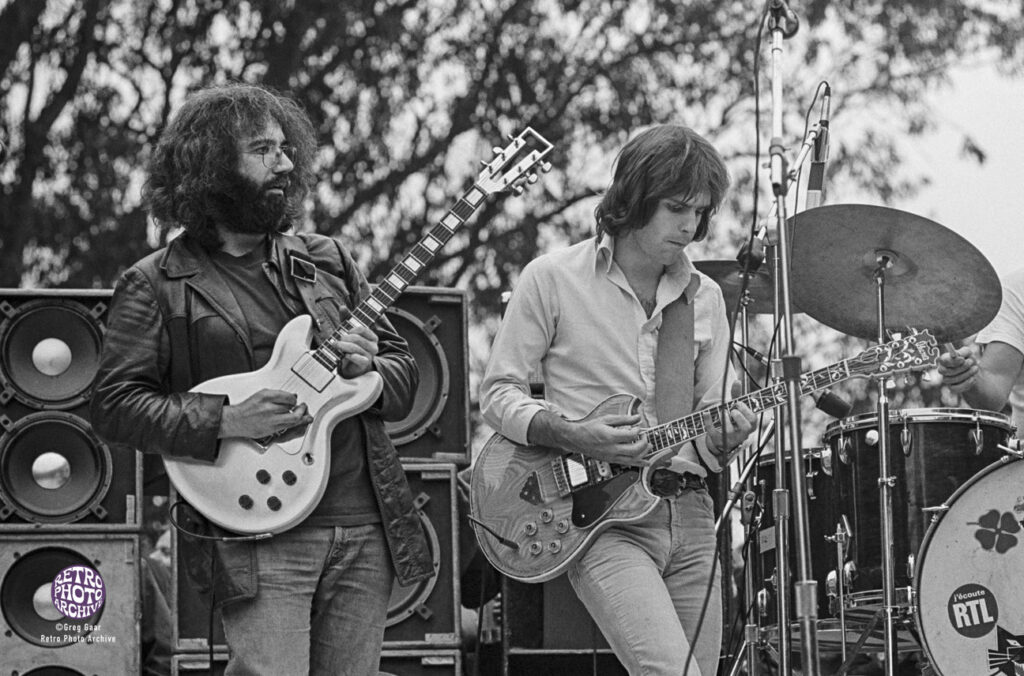
So I suggested to Kelly that we do a big historical Grateful Dead exhibit. I have a business with my daughter called Retro Photo Archives. We own an archive from Elizabeth Sunflower who was a SF photographer. I found in her archives a roll of film she shot after the Grateful Dead got busted at 710 Ashbury and were brought down to City Hall to the booking jail. There are pictures of Bob Weir with his hands cuffed behind his back behind bars. These photographs have never been seen by anybody! They’ve been in storage since Beth took them in 1967. There are almost 100 photos in the exhibit taken by people like Bob Minkin, Susana Millman, Baron Wolman …
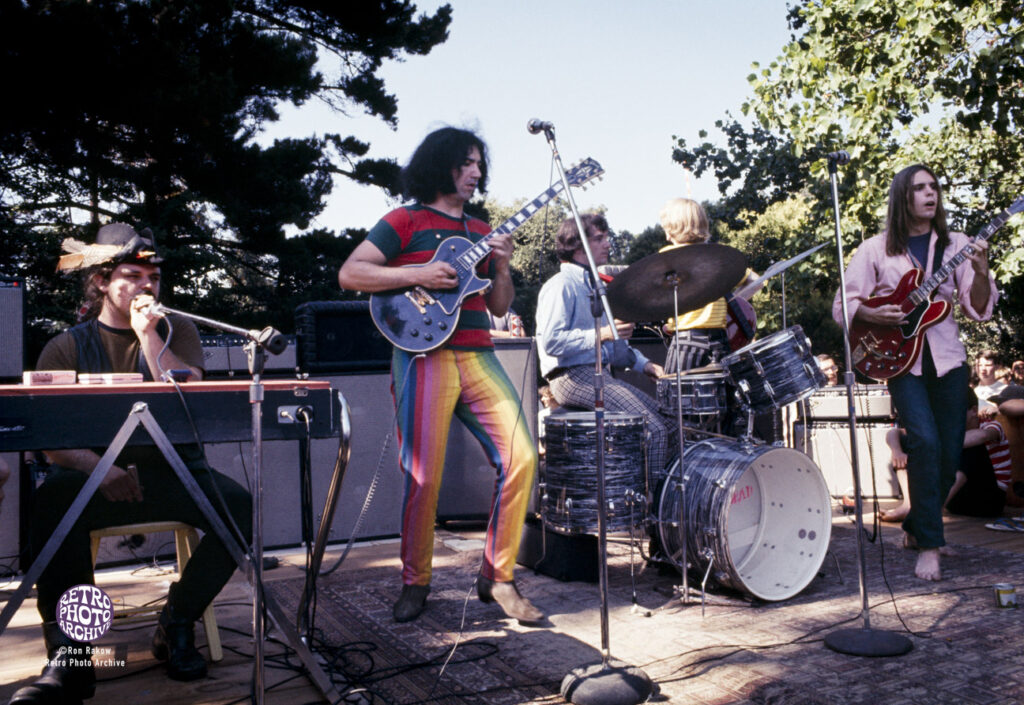
The photographs start at the beginning. We have a Herb Greene photo of them as the Warlocks, a portrait that was taken I believe on the back steps or the side steps of the small apartment that was at 710 Ashbury. The early days, free concerts in the park, Europe ’72, Dead go to Egypt, Radio City Music Hall, Bay Area venues, the Greek and the Frost because those were important venues for them. We have a wall that’s dedicated to New Year’s shows, a couple of walls dedicated to 1973, 1974, 1975.
HSV: How have the Dead have lifted you out of the darkness and into the light?
JB: The Grateful Dead are one of the most important things that happened to me. I’m happy I tapped into that cultural psychedelic zeitgeist at a young age.
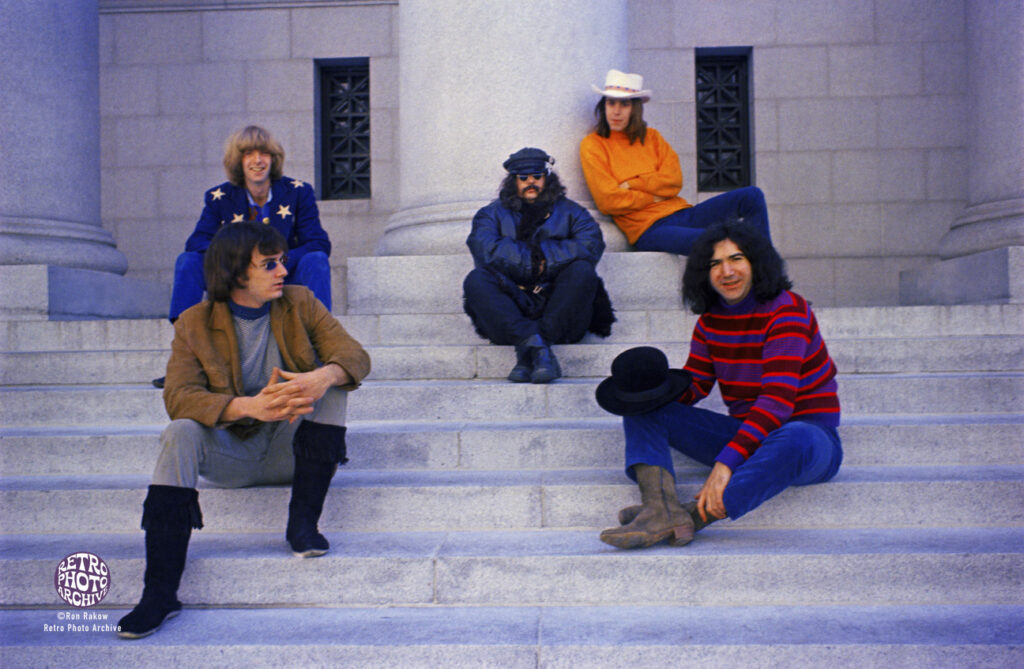
FULL TRANSCRIPT
HSV: I did some homework on you, so I’m glad this got pushed back a bit. It’s so funny how our lives have been parallel: Blair Jackson was my first boss at Mix Magazine when I got out of college at SF State, Ben Fong-Torres was my teacher back in, god, 1984. And then you at the iBeam — I used to go to the iBeam all the time; David Lowery of Camper Van Beethoven and Cracker is an old friend of mine, in fact I’m going to see him this Sunday up in Novato …
JB: Wow! Amazing, okay!
HSV: Yeah! Timothy Leary was a friend of mine, I met him in New York when I was there. I’m from the Bay Area but I lived in Manhattan for 8 years cuz I got so sick of the hippie shit. Blues Traveler were friends of mine in New York, Spin Doctors, that whole scene. Our lives have been very parallel. It looks like we’re about the same age, I was born in ’62, I think you’re a year older than me.
JB: Yep, I was born in ’61.
HSV: And it seems that rock and roll has weaved the whole road there.
JB: Absolutely.
HSV: So I really appreciate your time on this. For many a reasons, the magazine goes to print on Monday — I’m trying to, anyways.
JB: No worries! Is it a newspaper format or is magazine format?
HSV: It’s magazine. It’s 5×8. 12-pages, full color. Ben Fong-Torres has been in it, Bob Weir’s been on the cover, he’s an old friend of mine; Peter Coyote was in there; Rita Gentry, I’m sure you know Rita …
JB: Absolutely.
HSV: Where do you live, do you live in the City?
JB: I live in West Portal.
HSV: Okay, I’m on Page at Masonic. I’ve been in this place for 13 and then I was on Cole for 11, and then I was on the corner of Haight and Ashbury going to SF State back in 1982— so I’ve lived in this neighborhood, minus the 8 years in New York, I pretty much grew up here.
JB: So you’re right up the street from the Psychedelic SF Gallery?
HSV: Oh yeah, they’re dear friends of mine, Cynthia, Mike, Mark McCloud had a back cover ad in the Spring edition. Good people.
JB: In the summer of 1980 I stayed in a house on Masonic at Page and I was there for about a month I believe, July into August, the summer of 1980 I stayed in a flat up there with a guy named Andy who was a big acid dealer.
HSV: So let me give you the gist of this edition: Summer 2023 edition, because I just put my 20 year old cat “up” so she was basically a third of my life, I’ve been in grief the past couple of weeks and I thought, you know what? I’m not gonna be “Oh yeah, everything’s hunky dory groovy.” Dr. Dave is a friend of mind, he’s doing psychedelic-induced psychotherapy, things around it — not that I’m doing that, but we were talking about grief and how it’s part of life, so that’s not the theme of the magazine but from the darkness comes the light, between the dark and the light from Comes a Time, and I know you have a book entitled that. And now bringing it to the Haight Street Art Center having this exhibition at the same time.
Having the show in the Haight like this, what does this particular show mean to you?
JB: So I grew up in suburban New Jersey in the 1970s, went to high school from ’75 to ’79. You’re my same age basically so you get it. And San Francisco was this fantasy land. We read about it in the Electric Kool-Aid Acid Test, Jack and Neal were headed to the West Coast coming to San Francisco, we read about it magazines, Relix magazine and Rolling Stone. Relax magazine back then covered the Grateful Dead, nobody else really did.
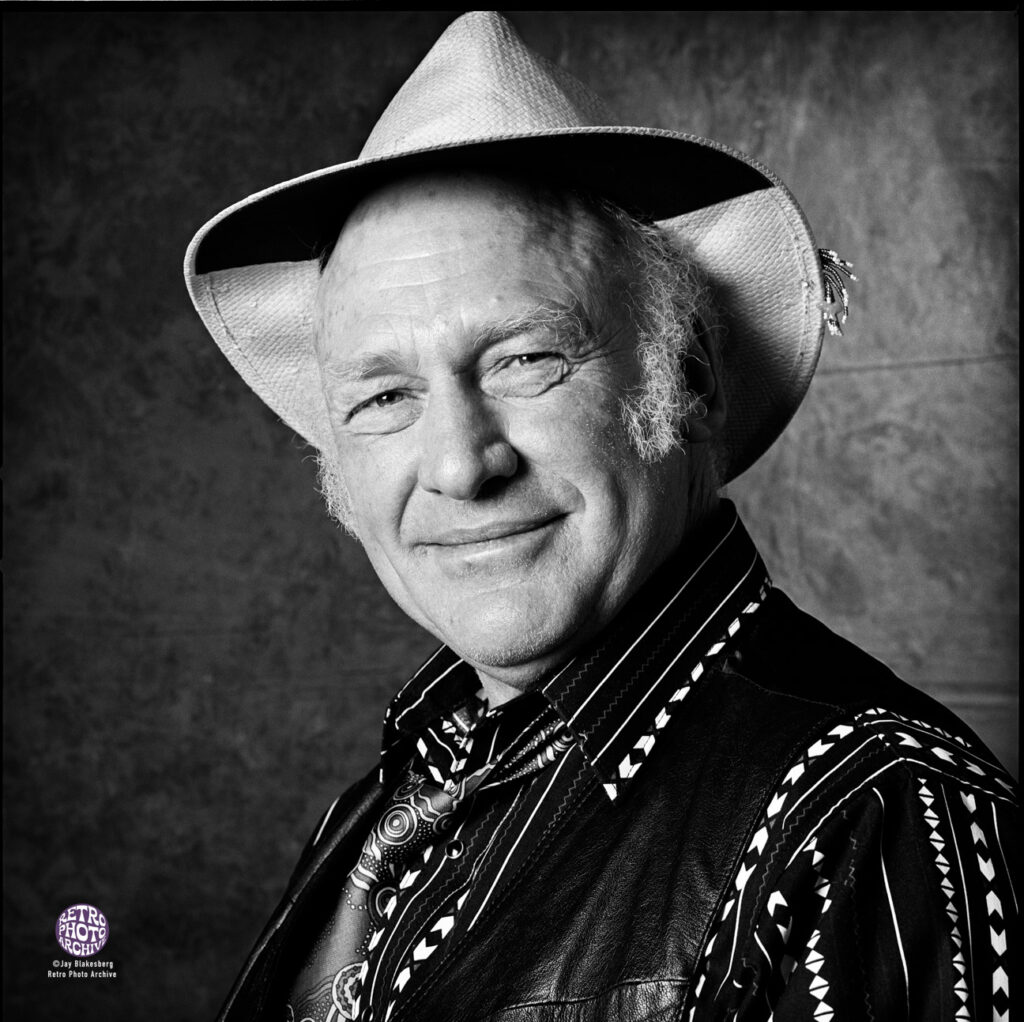
HSV: Right.
JB: And so in 1980 when I started going on Dead tour, at that point we were only 13 years out from the Summer of Love. So San Francisco was kind of the mythological place that when we were 15 or 16, we were thinking, how do we get to San Francisco? How do we get to where the Grateful Dead and the Jefferson Airplane and Quicksilver and the Haight Ashbury and Bill Graham and Chet Helms and the Avalon and the Fillmore and the Family Dog — and all of this stuff. How do we get there?
So for me to go from being that kid 45 years ago we’ll call it, to curating this exhibit for the Haight Street Art Center called “Between the Dark and Light: Grateful Dead 1965-1995” is a phenomenal achievement, and something I’m very proud of, and also very proud to be affiliated with the Haight Street Art Center. They asked me to be on their advisory board about six or eight months ago. I had put together an exhibit called “Into the Mystic: A History of Bay Area Rock Palaces”. It was an exhibit about all of Bill’s main rooms, starting with the Fillmore West, Hinterland, Kezar Stadium, Cow Palace, Oakland Stadium, Oakland Arena, Oakland Coliseum, Shoreline — it was all about the Bay Area venues and these iconic venues that are all connected by Bill Graham.
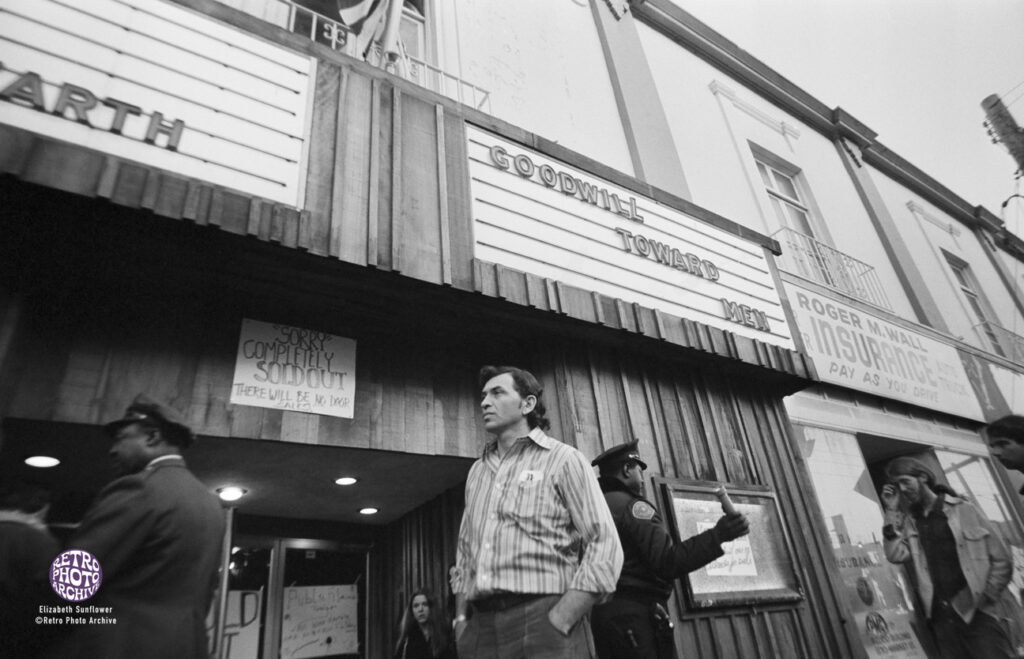
When the Haight Street Art Center saw that exhibit, they asked me to join their advisory board. And so I brought up the idea to Kelly Harris who is the executive director of the HSAC, I said, “You know in July, the Dead — otherwise known as Dead & Company — are going to be playing their final three shows ever …” actually, that’s not true. They’re going to do 3 nights in San Francisco as what they’re billing as the final tour. I just wanted to clarify they’re not their final shows ever. So I suggested to Kelly Harris at the Haight Street Art Center that we do a big historical Grateful Dead exhibit. And she thought it was a great idea.
We had grander plans for the exhibit just in terms of the amount of ephemera that we wanted to include — all sorts of very cool memorabilia, but the HSAC sort of broke it up into a couple of gallery exhibition spaces, and we have to share that space with some other groups of people. Every year, I believe the HSAC does a big gay Pride Month exhibit, so it was already on the books and it was going to take up a bunch of the other gallery space in there.
So we sort of lost some of the space that I thought maybe we would have for this Grateful Dead exhibit that we were going to use for ephemera, so we just sort of said, “Okay, we’re putting it in the main gallery, which I think is called the Great Room or the Great Gallery, and let’s just keep it to photographs with really great captions and posters. And that’s where we ended up and that’s what it is. Blair Jackson, who you know, longtime Grateful Dead historian, longtime friend of mine, Blair wrote the introduction for my book, “Between the Dark and Light: The Grateful Dead Photography of Jay Blakesberg”, a long out of print book that is no longer available unless you can find it used anywhere.
HSV: And he did just interview Herb Greene at the HSAC exhibit.
JB: I saw the Herbie exhibit, which is amazing.
So yeah, I brought Blair onboard to write the text, and Kelly sort of gave me free rein and gave me some parameters. They have a woman at the HSAC who is sort of the in-house curator and her name is Renee DeCossio. She sent me out down the path of wall sizes and what we had available in terms of layout for that gallery and what she was looking for to fill those walls. And I pretty much chose all the photographs. I have a business with my daughter called “Retro Photo Archives” and we own and/or manage a bunch of incredible photographic archives.
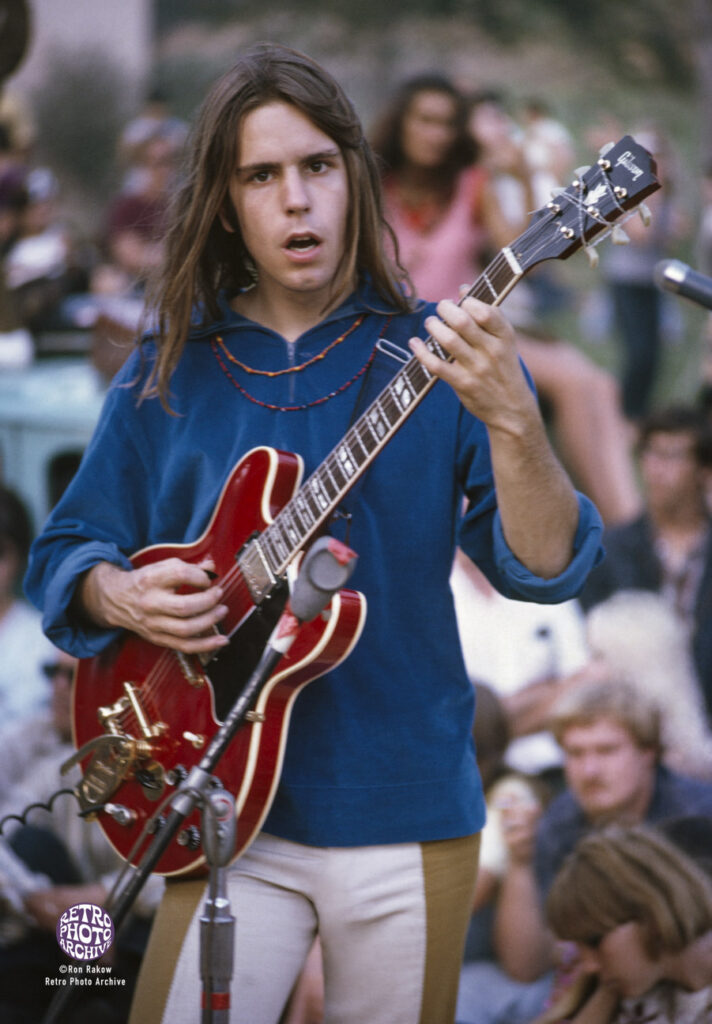
We own an archive from a woman named Elizabeth Sunflower, she was a San Francisco photographer who died 14 years ago. I found in her archives after we acquired it a couple years ago a roll of film that she shot after the Grateful Dead got busted at 710 Ashbury and were brought down to City Hall to the booking jail. There’s pictures of Bob Weir behind bars, and PigPen behind bars. These photographs have never been seen by anybody! They’ve been in storage since Beth took them in 1967 Bobby with his hands cuffed behind his back behind bars.
There are almost 100 photos in the exhibit. People like Bob Minkin has 2 photos, Susana Millman has 1 photo, Baron Wolman has 1 photo
HSV: Oh my god!
JB: Yes! These photographs have never been seen by anybody! They’ve been in storage since Beth took them in 1967 and they’ve essentially been in deeper storage since she died 14 years ago. So these are photographs that haven’t been seen in 55 years! We dug them out and we have one of the shots of Bobby with his hands cuffed behind his back behind bars in this exhibit. So there’s a handful of things like that that are rarely seen, if not never really seen at all. I think we’ve got about a dozen photographers whose work is going to be in the show. There’s a guy named Ron Rakow who co-managed the Grateful Dead back in the day. We have in this exhibit the most photos taken by a single photographer, who is either Ron or myself.
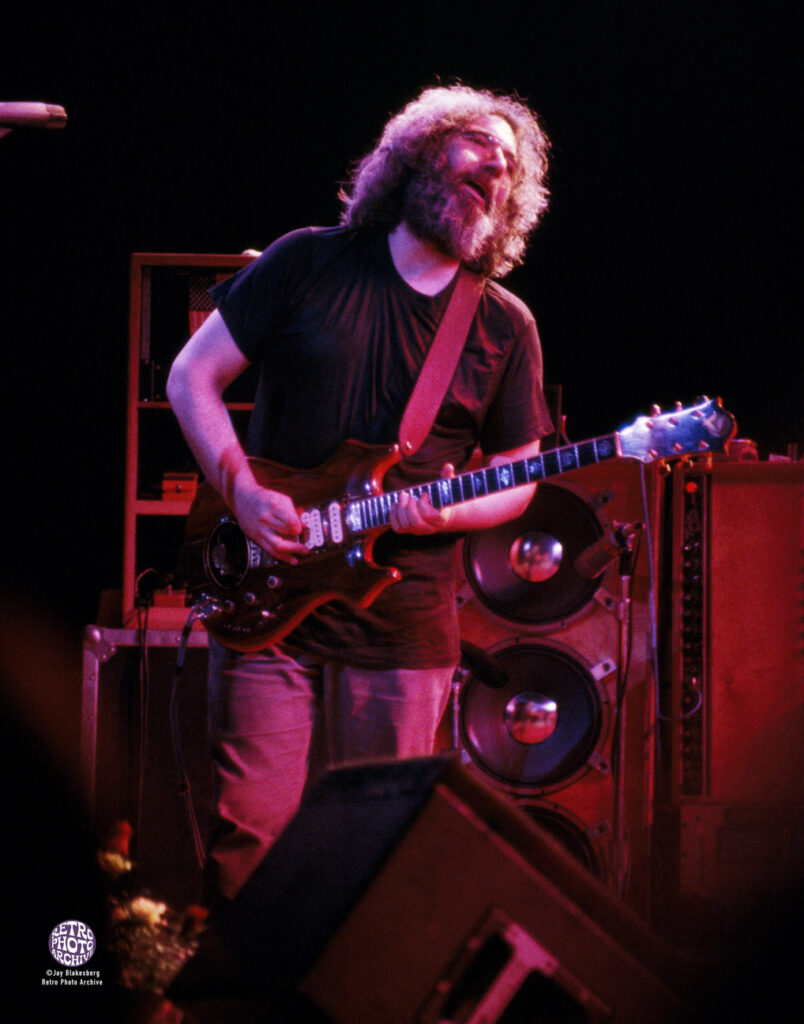
There are almost 100 photos in the exhibit. People like Bob Minkin has 2 photos, Susana Millman has 1 photo, Dave Seabury …
HSV: Psycotic Pineapple! [lau
HSV: Baron Wolman …
JB: Baron Wolman has 1 photo in there.
And so essentially I edited photographs that were in my archive that we either own and/or manage or that I photographed. So for instance, Susana Millman has a great photograph of the Greek Theater in Berkeley with the sun setting, taken all the way up at the top on the lawn, you can see the crowd, you can see the UC Berkeley bell tower in the background against a beautiful sunset. I had different photo in the exhibit that I curated, a black and white photo of the Greek Theater, and when were going through everything I said we’ve gotta find a color shot here and I said I’m pretty sure Susana Millman has a great photograph of the Greek from that same show. We were going to maybe use my black and white, but it’s got a great sunset, and that’s how that ended up in the book. So she has one photo in the book. Ed Perlstein has I think 3 or 4 photos. He shot some very iconic shots of Bill Graham.
HSV: And I see Dave Seabury has some photographs in there. I know Dave Seabury many years. I used to go watch the Psycotic Pineapple when I was 16 at the Keystone Berkeley. I didn’t realize he was a photographer. I always thought he was just a drummer.
JB: Exactly! So Dave is a drummer and Dave is a Psycotic Pineapple and Dave is an amateur photographer. He decided he wanted to sort of downsize his archive a little bit. He didn’t shoot a ton of stuff but I worked out a deal with him and I acquired his archive. And he has a series of about 5 great shots of the Grateful Dead onstage at the Berkeley Greek Theater on the UC Berkeley campus, of the Grateful Dead playing there in 1967. People are sitting down and there’s a teeny little sound system and we used that against a photograph that I took in 1982 of the Grateful Dead at the Greek Theater in Berkeley. You can sort of do a comparison of then versus now, you know, with a giant sound system and a tie-dye backdrop and things like that.
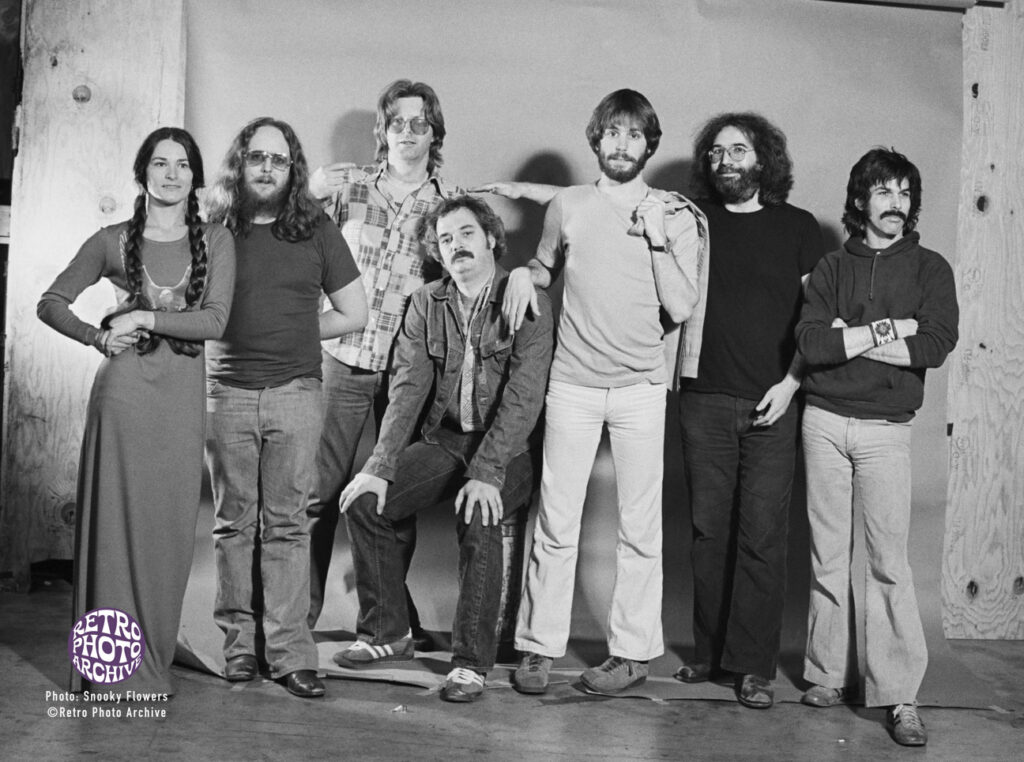
I was looking for photographs that people had not seen a ton of, which is really hard to do because most Grateful Dead archives have been seen extensively and they’ve been published extensively. But I did find a bunch of stuff that is a little bit more obscure and hasn’t been seen as much. Like I said, we have about 100 photographs in this show, and 15 or 20 archival posters: Fillmore, Avalon, other Grateful Dead events throughout their career.
HSV: I love the whole Bay Area-centricness of it, and of course the Haight Ashbury. I’m looking at Kelly Harris’s quote: “The exhibition poignantly tells the story of a Bay Area treasure that came of age during the golden age of San Francisco’s Haight Ashbury.”
JB: Absolutely. So yeah, the photographs start at the beginning. We have a Herb Greene photo of them as the Warlocks, a portrait that was taken I believe on the back steps or the side steps of the small apartment that was at 710 Ashbury. I think it’s 710A. I think that’s where that photograph was taken if I’m remembering correctly.
The exhibit is somewhat timeline based, but it really hits on highlights. The early days, 710 Ashbury, free concerts in the park, things like that. We have Europe ’72, we have the Dead go to Egypt, we have Radio City Music Hall and the Warfield in 1980, we have the Bay Area venues, the Greek and the Frost because those were really important venues for them in the ‘80s, so we have stuff like that. We have a wall that’s dedicated to New Year’s shows. We have a couple of walls that are dedicated to 1973, 1974, 1975. So it is timeline based and like I said Blair Jackson wrote the captions, so it’s got really good, concise, historical information, incredible photographs, and it celebrates a band that started in the Peninsula and slowly ingratiated themselves into the Haight Ashbury scene and became icons of the Haight Ashbury.
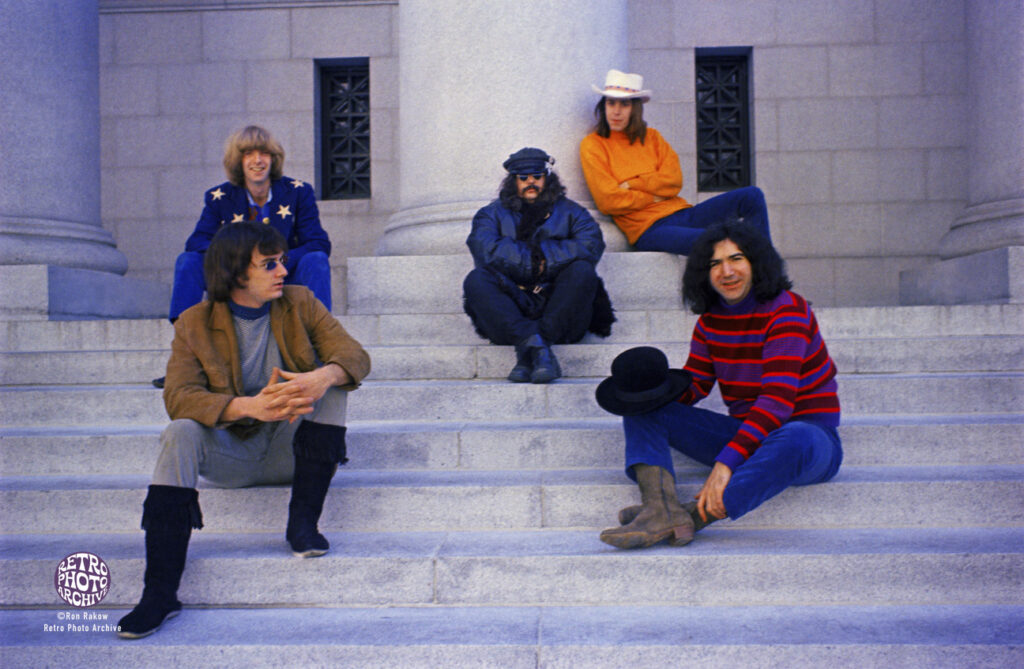
HSV: Fantastic, okay good. I was going to say just to bring it up to today and the whole pandemic and the amazingness of the energy of this band and the beauty of the hope or the light that they do bring even in dark times. And I was hoping you could maybe speak to the fact that the world’s kind of messed up right now. It really is.
JB: Yes. Well of course we’re sadly moving into a fascist society because of certain politicians that believe that banning books is a good thing.
HSV: I don’t want to get into it too much, but just the digital thing, the whole thing …
JB: Okay, yeah, let’s strike that from the record. We’ve come through a pandemic which we never thought we would experience in our lifetime. And like you said and as you know, “Between the Dark and Light” is a song lyric of, actually technically of the Jerry Garcia Band, Jerry Garcia record called “Reflections” from the song “Comes a Time”
I was looking through Grateful Dead records for something that resonated with photography. And so “between the dark and light” because that’s what photographs are: dark and light, highlights and shadows. Kelly thought that was a good title. The other title that I had given to her was “Grateful Dead: An American Beauty 1965-1995”. And I really liked that but she like “Between the Dark & Light”. And even though I had done a book which is long since out of print and unavailable I said sure let’s just go with it, I think it’s great. And that’s how we got the title.
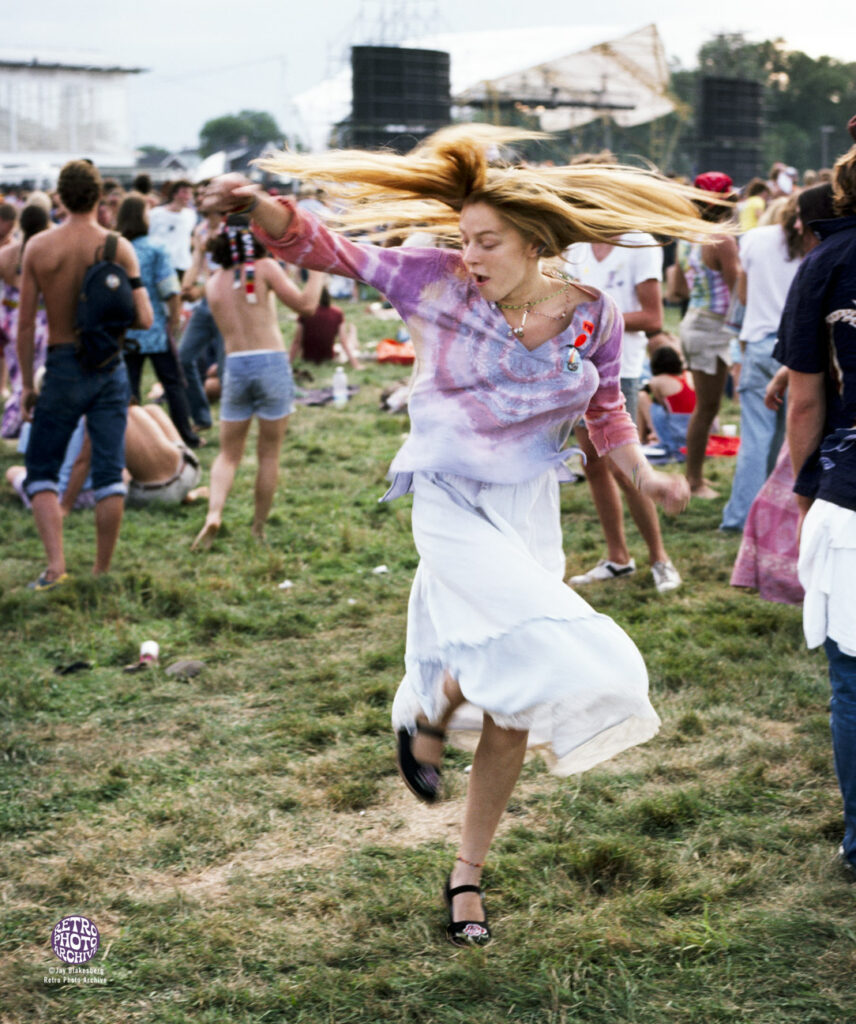
HSV: Let me ask you something personal: How have the Grateful Dead in your life and having been immersed in this for so many years I’m sure you’ve been through your darkness. Can you speak to how the Dead have lifted your out of the darkness and into the light?
JB: Absolutely. The Grateful Dead are certainly one of the most important things that happened to me in my life. I’m very happy that I tapped into that cultural psychedelic zeitgeist at a young age. I was saying the other day to a friend that 40 years ago if we had said, you know, in the early 2000s Phil Lesh from the Grateful Dead is gonna have a nightclub in Marin County called Terrapin Crossroads and play 3 nights a week with the most bad ass musicians out there and play all Grateful Dead songs in a room with 300 people you would’ve had me committed to an insane asylum, right? But that’s what happened. I tapped into the Grateful Dead, it was life-changing for me. I discovered psychedelics, also life-changing for me in many, many ways. I connected with a drug dealer here in San Francisco, and LSD manufacturer back in 1980 and he offered to overnight me a couple thousandths of LSD and become part of his underground LSD distribution network. He lived on Oak Street in the Haight Ashbury. He’s long deceased. We started selling copious amounts of LSD to my friends in suburban New Jersey where I grew up. I got caught and I went to prison, so that’s the darkness. But the Grateful Dead have always been the light and I still get to experience that music, I get to still work with the band, I get to photograph them regularly. I’m with them right now as a matter of fact in Boston. They have 2 show starting tomorrow and the next day. And I get to curate cool exhibits for places like the HSAC about the Grateful Dead.
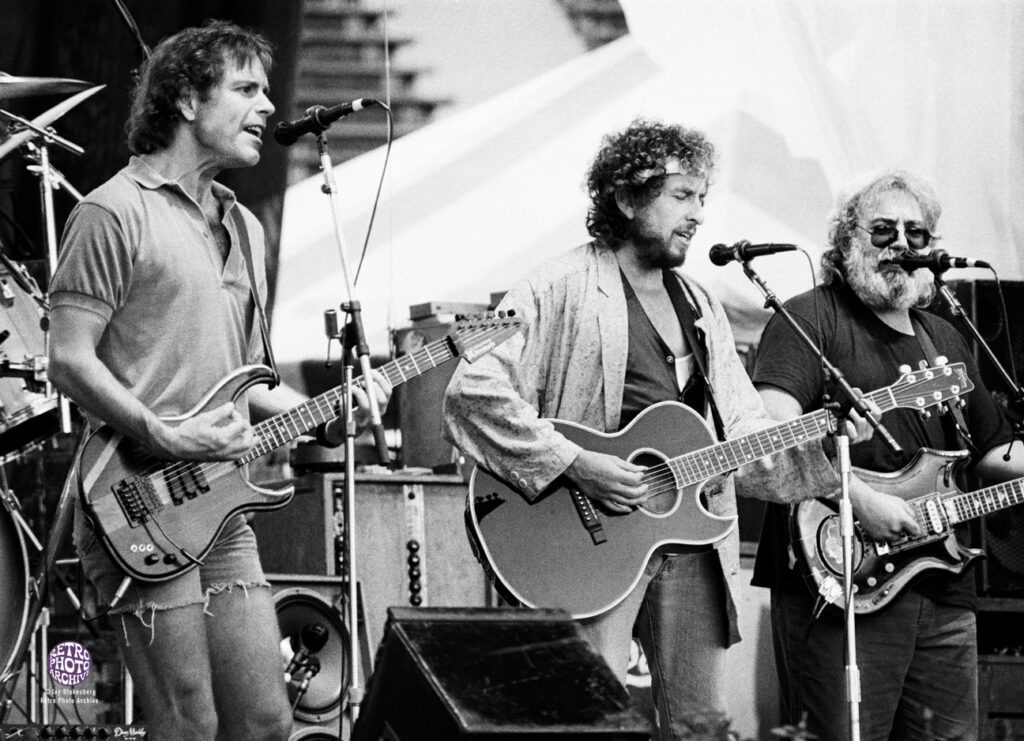
HSV: Wow, that’s beautiful! And in a time when psychedelics are becoming decriminalized! If somebody had told you that back in the day, right?
JB: Isn’t that amazing? If we had said that 30 or 40 years ago! Yeah to be able to go and get mushroom capsules that are micro-doses, I mean, Jesus Christ!
HSV: It’s pretty wild.
What would you like to say to the Haight Ashbury, because this is the Haight Street Voice, hyper-local with a global perspective, I always ask people what would you like to say to the Haight Ashbury community today, let alone communities everywhere all over the world? If you had a loudspeaker and you could say something …
JB: The Haight Ashbury was the focal point of a once in a lifetime cultural zeitgeist that changed the way the entire planet thinks, right? Kesey and Ginsberg and David Nelson and all these people were taking LSD for the CIA down in Palo Alto and the vortex led to the corner of Haight and Ashbury. There’s still a lot of people out there that don’t know what Haight Ashbury even means. No one knows it’s a neighborhood, no one knows it’s 2 cross streets — not nobody but there are a lot of people out there that don’t know that. San Francisco has always been a forward-thinking, game-changing, bohemian subculture that has spread globally. And it certainly did that with psychedelics and just look at how many wonderful minds have been blown because of it.
HSV: The media these days is always saying how messed up SF is, dirty, dangerous, full of homeless, dark. How do you feel about that?
JB: It’s sort of like Harry Reasner standing on the corner of Haight Ashbury filming the Hippie Temptation in 1967. It’s a bunch of fear-mongering. Listen, every single city in this country has similar issues. Why do so many homeless people come to San Francisco? Because we have good community services for them.
HSV: And the weather.
JB: And the weather. I always say that as well. Do you want to go spend your homeless winter in New York City or do you want to come to San Francisco where it’s mild and 40. And listen I’m not encouraging anybody to be houseless. But the whole media thing right now about San Francisco and that issue is being blown out of proportion. I think our what our bigger problem is is that nobody wants to go back to work in our downtown offices and there are certain parts of our city that are becoming ghost towns from a real estate standpoint which is affecting our economy and affecting how we approach work and social life and things like that.
So we’re a city in the United States at time with extreme wealth and extreme poverty, and it’s in every major city you go to.
HSV: So when people walk out of this exhibit on July 11, it’s definitely a retrospective, it’s a look back, but when they walk out of this exhibit, what do you hope they’re feeling, moving back into the world in the state that it’s in?
JB: I don’t think there’s a point of reference that’s crossed, really. My goal with this exhibit is entertainment and educational. There’s 100,000, 200,000, I don’t know how many, Deadheads descending to come see Dead & Co at Oracle Park, right? And a lot of these people saw Jerry Garcia and a lot of them didn’t. A lot of people saw Jerry Garcia play with the Grateful Dead and their spouse didn’t. A lot of them never even heard of the Grateful Dead before they met that man or woman who’s a big Deadhead. So this is an opportunity to come share this with your kids, your family, your spouse, your partner, your lover, your friend, anybody who’s interested in this little sliver of warped pop culture history known as the Grateful Dead and walk away and say, “Wow, those are some really fucking cool photographs and I just learned a shit ton about this band and the history and where they fit in to the cultural part of pop culture history in our country, in San Francisco, in modern day times.
So I don’t think there’s a reference point to the darkness or the weirdness of what’s going on politically or socially or culturally. This is a historical exhibit that I want people to be excited about, be educated, and be entertained, and move on from there.
HSV: Dr. Dave and I were talking about grief, it was the day after I had to put my 20 year old cat up and I was pretty devastated and we were talking about grief and he said what helps getting through grief is curiosity and inspiration and having something that inspires and makes one curious, and that totally helped me cuz I’ve been infinitely curious all my life. That really is what helps us get through the dark stuff. I’d like to think the Grateful Dead are all about exploratory bringing us to the light.
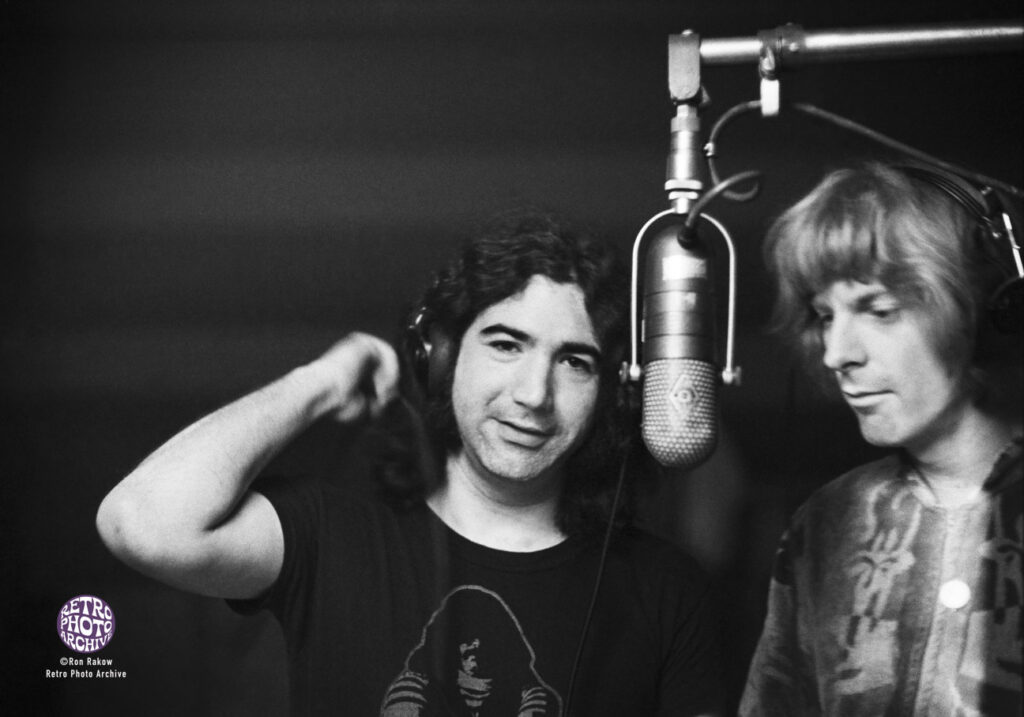
JB: Absolutely! And art is supposed to do that. If you’re an aspiring photographer when you walk out of that exhibit, hopefully it makes you wanna take some pictures in a different way than you had been doing it, maybe it makes you wanna become a photographer, maybe a journalist, or maybe dig deeper into the history cuz we only have so many walls in this exhibit, or you want to learn more about specific time period of the Grateful Dead, maybe they want to turn a friend on to it that never really understood it. Maybe they want to bring a friend who’s never gotten the Grateful Dead and this exhibition helps them get it, about why this band is so important to me, to pop culture, to the planet at large.
HSV: The healing power or art and music.
JB: Absolutely.
HSV: What would say about the iconic photo by Herb Greene of the Grateful Dead under the Haight Ashbury sign?
JB: It’s one of those photos that I saw as a teenager that said maybe some day I could be a photographer and photograph the Grateful Dead.
HSV: Fantastic, thanks!

